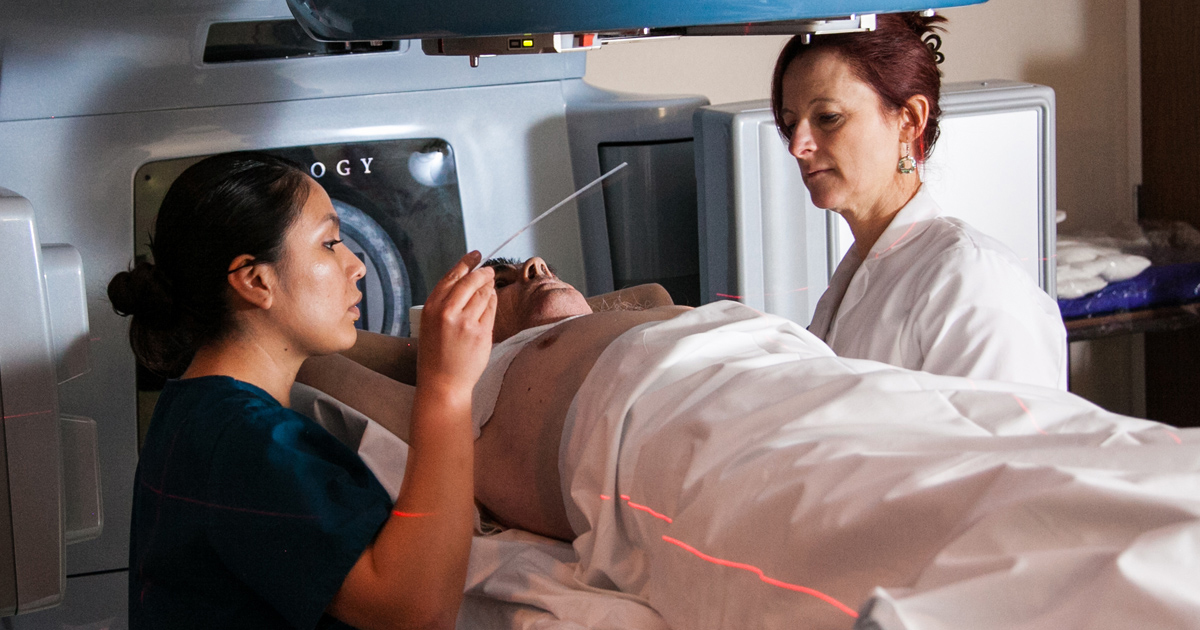Guide To Effective Lung Cancer Diagnosis And Treatment
Lung cancer is a type of cancer that originates in cells that form in an individual's lung tissues. Lung cancer leads the United States in most cancer precipitated fatalities, claiming more lives than prostate, ovarian, colon, and breast cancers combined. The most prevalent causes of lung cancer are cigarette smoking and prolonged secondhand smoke exposure. Individuals who do not smoke can also get lung cancer, but causes of such cases are unclear. Symptoms include shortness of breath, chest pain, headache, bone pain, hoarseness, coughing blood, and a persistent cough.
Patients have a variety of lung cancer treatment options. They may undergo immunotherapy for lung cancer or even have a regimen for lung cancer medication. Radiation treatment for lung cancer may also be an option. Ultimately, patients must discuss the best lung cancer treatments with their doctor. Of course, it helps to have a basic understanding of these options, and the diagnostic tests, first.
Sputum Cytology

Doctors may choose to order a sputum cytology if they suspect that a patient has lung cancer. Typically, this test is ordered when patients display symptoms such as shortness of breath, lung pain, and a persistent cough. This test involves coughing up some sputum. SPutum, which is also called phlegm, is the fluid that lower respiratory tract cells secrete. Once doctors have the sample, it will often be sent to the lab for analysis. This is where a technician will examine the patient’s sputum sample under a microscope and look for any cancerous cells. Unfortunately, this test is often not sufficient as the only diagnostic test for lung cancer.
Computerized Tomography Scan

One of the most common tests involved in diagnosing lung cancer is a computerized tomography (CT) scan. The scanning machine takes x-ray images of the patient’s lungs to get a detailed view of their condition. A computerized tomography scan will show doctors the shape and size of the patient’s lung tumor, as well as its precise location. The scan should also let the doctor know if the patient’s tumor has spread to anywhere else in their body and if the patient has any larger lymph nodes in their chest. They can also use this image to help guide a biopsy, which can help definitively diagnose lung cancer.
Radiation Therapy

Radiation therapy uses concentrated beams or radioactive materials to destroy cancerous cells or stop them from growing. The most common form of radiation therapy used for lung cancer patients is referred to as external beam radiation. External beam radiation uses a large machine that aims the high-energy beams at the skin above the local area where the cancerous tissue is located. This is to minimize damage to healthy surrounding tissues.
Another form of radiation often used to treat lung cancer is brachytherapy. This form of internal radiation therapy uses a small quantity of radioactive material placed into the patient's airway close to the cancerous tissue. The pellets or seeds containing the radioactive substance are typically removed from the patient's body after a set amount of time. This is to allow the radiation to do damage and kill the malignant tumor cells.
Chemotherapy

Chemotherapy refers to the use of a combination of potent medications to eliminate malignant cells in the body. This treatment works by targeting the cells in the body undergoing the cell division process and multiplying. Cancerous cells have specific characteristics where they grow faster, divide more often, and do not die at the same rate as healthy cells. Chemotherapy medications allow patients to take advantage of these properties of malignant cells because they are almost always in some stage of the cell division process.
Chemotherapy is typically administered intravenously through a vein in a chemotherapy clinic, medical office, or hospital setting. Some patients may need to receive chemotherapy through central venous catheters or central venous access devices. These devices offer a stronger and larger intravenous entry point than a traditional intravenous catheter. Chemotherapy may be administered independently in cases where the patient cannot undergo tumor excision surgery. In other cases, it can be combined with radiation therapy and surgical procedures.
Surgical Options

An individual with lung cancer has numerous surgical options for treatment. The type of surgery used to treat lung cancer depends on several factors, including the size and exact location of the tumor. The surgical option used for smaller localized areas of cancer within the patient's lung is a wedge resection. This surgery is where the cancerous tissue and a small margin of healthy lung tissue around it are removed. When the cancerous tissue is larger than what can be treated with a wedge resection, a segmental resection is performed. A segmental resection involves removing a larger portion of lung tissue that contains the malignant tumor.
When the cancerous tissue infiltrates most of one of the five lobes of the lung, a lobectomy is used. This procedure involves the removal of an entire lobe of the lung. When very little tissue of the lung can be spared due to full cancer infiltration of most of the lobes of the lung, doctors will perform a pneumonectomy. This procedure is one in which an entire lung is removed.
Immunotherapy

Immunotherapy is a treatment method that uses the immune system's unique characteristics to detect and fight off malignant cells. This therapy is possible because the immune system is such a complex mechanism with endless adaptive abilities. Checkpoint inhibitors work by stopping cancerous tumors from disabling the checks and balances the mechanism that causes the inappropriate deactivation of the immune system in cancer patients.
Monoclonal antibodies, another form of immunotherapy, work with the use of artificial antibodies specifically manipulated to target cancerous cells. They are manipulated to act similar to the way natural antibodies in the immune system do. Adoptive cell therapy is a type of immunotherapy involving the removal of immune T cells from the body so they can be altered and manipulated in the laboratory before being placed back into the body to fight off cancer cells.
Radiosurgery

Radiosurgery is a good alternative to traditional open surgery because no large incisions are required. Radiosurgery involves placing small pieces of metal referred to as fiducials around the cancerous tissue between one and three weeks before the treatment session to mark the area for the machine to follow. A large needle is typically used to place the fiducials in the body. This is why incisions are not required.
Radiosurgery works by using high doses of radiation for longer sessions to damage and kill cancer cells. Radiation beams in radiosurgery are aimed at the area where the cancerous tissue is located from multiple different angles simultaneously. This is what makes it a more targeted and powerful radiation method. Radiosurgery is really an advanced form of radiation therapy administered by a certain technique and process in fewer sessions than traditional radiation therapy.
Targeted Therapy

Some individuals with lung cancer may receive targeted therapy as a treatment. This cancer treatment involves drugs that focus on specific abnormalities in their cancer cells. Thus, target therapy helps kill cancer cells without damaging others. Some targeted therapy treatments will only work when an individual’s cancer cells have specific genetic mutations. Thus, this is often not the first lung cancer treatment chosen. In fact, although there is a variety of drugs used in targeted therapy, most patients who receive them have advanced cancer or cancer that keeps recurring.
Supplemental Oxygen

One of the most common symptoms of lung cancer is shortness of breath. In addition to this, many cancer treatments can make it harder for individuals to breathe. Thus, it is common for lung cancer patients to receive supplemental oxygen to lessen the work their lungs have to do and help them cope with the symptoms of their condition as well as the side effects of treatment. In most cases, oxygen is delivered through a face mask that patients put on or an oxygen cannula. Patients will often have portable oxygen tanks that they can take with them everywhere. Of course, they may also have stationary tanks. The choice depends on how much supplemental oxygen they require as well as what their doctor recommends.
Acupuncture

Acupuncture is among the alternative and complementary treatments for cancer, including lung cancer. Acupuncture involves a professional inserting small needles into specific points of an individual’s body to relieve pain and relax them. Unfortunately, it cannot cure lung cancer. However, acupuncture is still a common treatment, since it can help relieve some symptoms of a patient’s cancer. It can also help patients cope with the side effects of cancer treatment. Acupuncture is especially helpful in treating the side effects of chemotherapy, which include nausea and vomiting. Information indicates that receiving acupuncture regularly can help with lung cancer pain relief as well.
